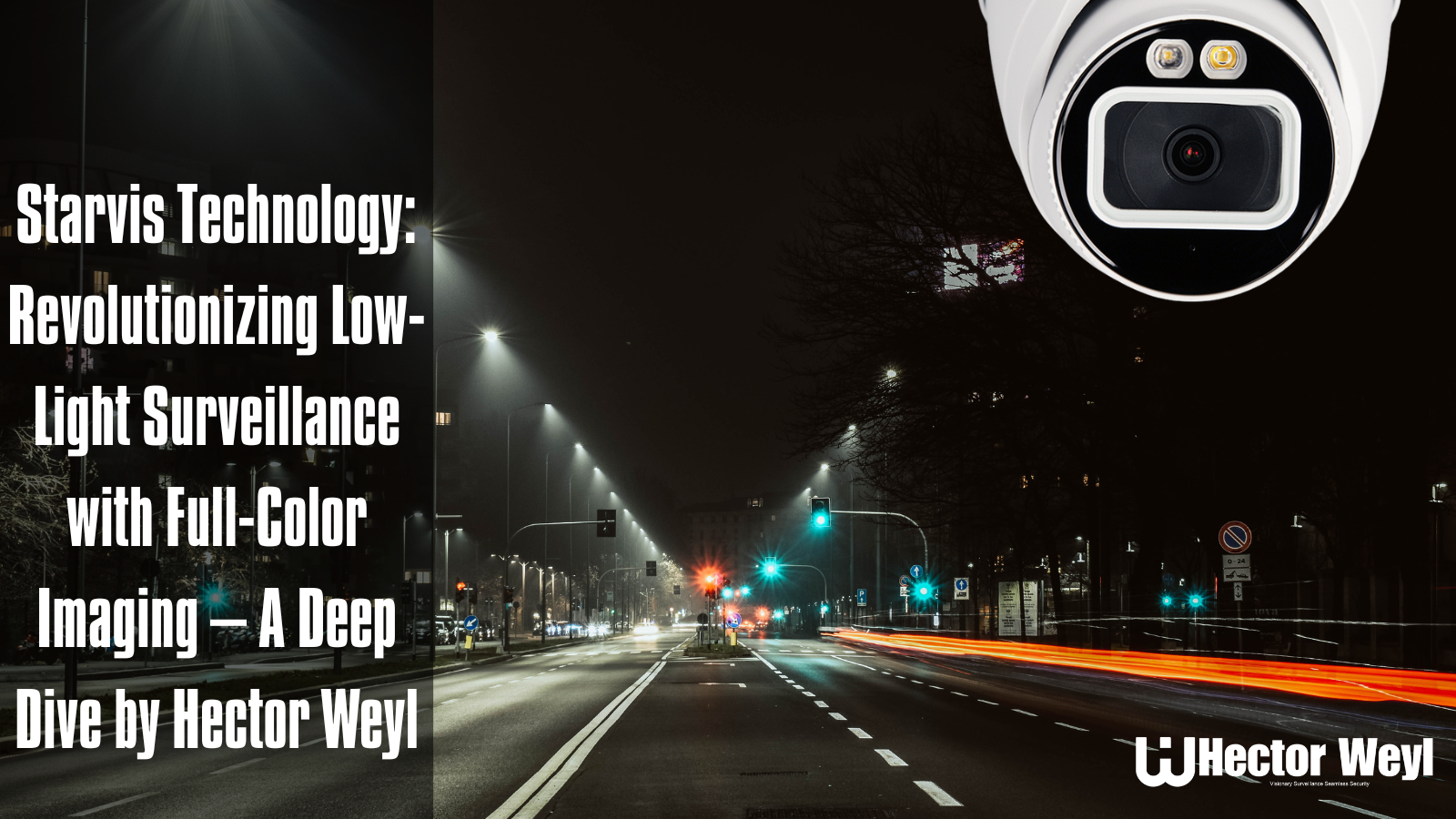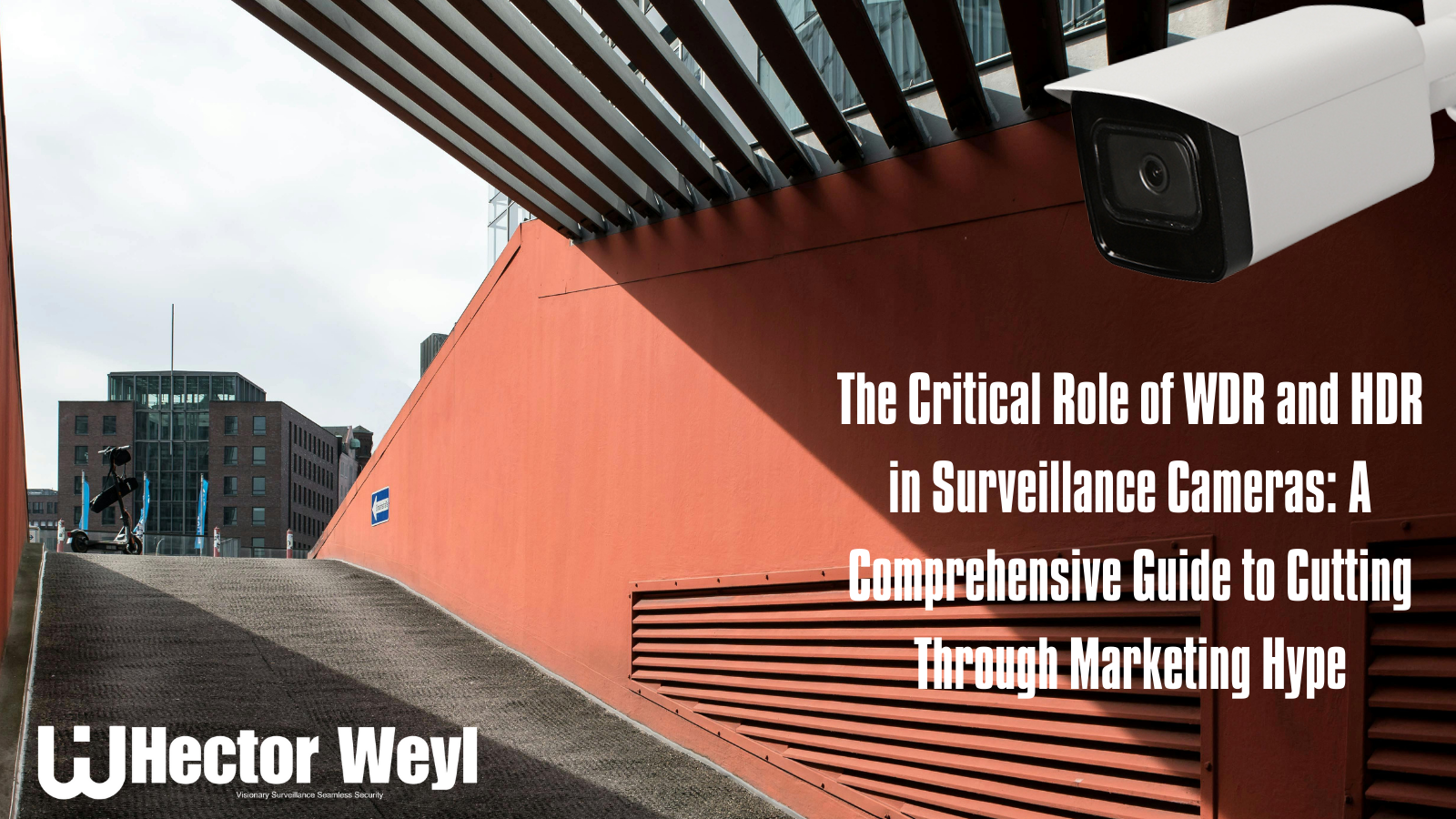In the competitive landscape of security technology, manufacturers often bombard consumers with a blizzard of specifications: 4K resolution, 12MP sensors, H.265 encoding, and powerful low-light capabilities. While these metrics are important, they all share a common, critical dependency: the quality of the lens projecting the image onto the sensor. A 4K sensor is rendered useless if the lens in front of it cannot resolve 4K detail—for example, a 4K camera deployed at a highway toll booth may fail to read license plates in overcast weather, not because the sensor lacks clarity, but because the lens cannot transmit fine edge details through scattered light. The lens is the eye of the system, and its performance ultimately dictates the quality of the entire imaging chain, especially in high-stakes security scenarios where missing a detail (e.g., a suspect’s facial feature, a tampered package) can have serious consequences.

For too long, lens evaluation has been shrouded in vague marketing terms like "HD," "5MP," or "high-resolution glass." These terms are subjective and virtually meaningless without a standardized, scientific basis for comparison. A lens labeled "HD" by one brand might struggle to resolve 2K detail, while another’s "5MP" lens could outperform it in real-world conditions. The industry needs transparency and engineering rigor—not just claims, but quantifiable data that proves a lens’s ability to deliver consistent performance across different environments (e.g., low light, backlight, extreme temperatures).
The most accurate and comprehensive method for evaluating lens performance is the Modulation Transfer Function (MTF). Unlike pixel counts or "HD" labels, MTF moves beyond simplistic metrics to provide a complete, graphical representation of a lens’s ability to transfer contrast and resolution from the real world to the sensor. It accounts for variables like edge sharpness, field uniformity, and directional performance—factors that directly impact how well a security camera can capture actionable details. This article offers a deep, technical dive into the world of MTF: we will demystify its principles, explain how to interpret its charts, and demonstrate how leading optical engineers leverage this powerful tool to design lenses that deliver unparalleled clarity, contrast, and reliability for professional security applications. Understanding MTF is key to making informed decisions and ensuring your security system sees every critical detail, no matter the environment.
Part 1: The Foundation - Visual Resolution and the Concept of Line Pairs
Before delving into MTF, it’s essential to understand the traditional method of evaluating lenses: visual resolution testing. This approach, while simpler than MTF, lays the groundwork for understanding how lenses reproduce fine details—and why its limitations led to the adoption of more scientific standards.
1.1 The Human Element in Image Assessment
Ultimately, security video footage is either analyzed by human operators (e.g., monitoring a retail store for theft) or machine learning algorithms (e.g., automatic license plate recognition, facial detection). In both cases, the perceived sharpness and clarity of the image are paramount. A blurry image may cause an operator to miss a trespasser or an algorithm to misidentify a license plate. Historically, lens quality was assessed by using the lens to photograph specially designed test charts (e.g., the ISO 12233 resolution chart) and determining how fine a detail could be discerned. This method, known as visual resolution testing, relies on the human eye or software to judge when lines or patterns become "just distinguishable."
1.2 Line Pairs (lp/mm): The Currency of Resolution
The standard test charts for visual resolution feature alternating black and white bars of varying thickness. A single set of one black and one white bar is known as a Line Pair (lp)—this unit measures how many fine detail "cycles" a lens can reproduce. Resolution is quantified as line pairs per millimeter (lp/mm), which describes how many such pairs fit within a 1mm span on the sensor.
Calculation and Practical Examples
- A resolution of 10 lp/mm means 10 black-white pairs fit into 1mm. This translates to 20 individual lines (10 black, 10 white), with each line measuring 0.05mm wide (1mm ÷ 20 lines). For a security camera monitoring a parking lot, this might be sufficient to distinguish between a car and a person, but not to read a license plate.
- A resolution of 30 lp/mm is far more demanding: it requires 30 pairs (60 lines) per millimeter, with each line just 0.0167mm wide. This level of detail is critical for applications like traffic surveillance, where reading a 6-character license plate from 10 meters away requires a lens capable of 30+ lp/mm at the sensor plane.
- For high-end security cameras (e.g., 8K models), lenses may need to resolve 50+ lp/mm to fully leverage the sensor’s pixel density—otherwise, the sensor’s extra pixels will only capture "empty" detail, leading to larger file sizes without better image quality.

1.3 Limitations of the Visual Resolution Method
While visual resolution testing is intuitive, it has significant shortcomings that make it inadequate for professional security applications—where consistency and reliability are non-negotiable:
Anisotropy: Directional Performance Variation
A lens’s resolving power is not uniform in all directions. Most lenses perform differently along radial (Sagittal, S-direction) lines (spoke-like patterns from the center of the image) versus tangential (Meridional, M-direction) lines (concentric circle patterns). For example, a lens might resolve 35 lp/mm in the sagittal direction but only 28 lp/mm tangentially. A simple line pair chart (which often uses only horizontal/vertical lines) may not capture this nuance, leading to an overestimation of performance—critical in scenarios like facial recognition, where diagonal features (e.g., eyes, nose bridges) could be blurred.
Field Position: Edge vs. Center Performance
Resolution is always highest at the center of the image and degrades toward the edges—this is a fundamental limitation of optical design. A lens might resolve 40 lp/mm at the center but drop to 20 lp/mm at the corners. Visual resolution testing often focuses on the center, ignoring edge performance—yet security cameras frequently need to capture details across the entire field of view (e.g., a wide-angle camera monitoring a building perimeter). A single lp/mm number (e.g., "30 lp/mm") fails to describe this drop-off, leading to unexpected blurriness in real-world use.
Subjectivity: Inconsistent Judgment
Visual resolution relies on human or software judgment to determine when lines are "just resolvable." For humans, this can vary based on factors like fatigue, lighting, or monitor quality; even software algorithms may have different thresholds for "clarity." A 2022 study by the International Society for Optics and Photonics (SPIE) found that different operators could vary by ±5 lp/mm when assessing the same lens—enough to mean the difference between reading a license plate or not.
Incomplete Picture: Ignoring Contrast
Visual resolution measures only how fine a detail a lens can reproduce, not how much contrast it maintains. Contrast is the difference between the darkest and lightest parts of an image—without it, even a high-resolution image will look soft and "muddy." For example, a lens might resolve 50 lp/mm, but if the black bars on the test chart appear gray (low contrast), the image will lack the "pop" needed for operators to quickly identify details. The industry convention of using 30 lp/mm for sharpness and 10 lp/mm for contrast helps, but these two numbers still oversimplify a lens’s complex behavior—especially in challenging lighting (e.g., backlight, dusk), where contrast degradation is most pronounced.
These limitations are why the security industry has increasingly adopted MTF as the gold standard for lens evaluation: it addresses every shortcoming of visual resolution testing, providing a holistic view of performance.
Part 2: The Physical Limits - Aberrations and the Diffraction Barrier
To understand why even high-quality lenses fail to be "perfect," we must first explore the physical phenomena that degrade image quality. These factors—known as optical aberrations and diffraction—set fundamental limits on what a lens can achieve, and they directly influence how MTF charts are interpreted.
2.1 The Three Enemies of Optical Performance
Optical aberrations are imperfections in how light is refracted (bent) by a lens, leading to distorted or blurred images. For security lenses, three aberrations are most impactful:
Chromatic Aberration: Color Fringing
Different wavelengths of light (e.g., red, green, blue) refract at slightly different angles when passing through glass. This causes color fringing—where different colors focus on slightly different planes of the sensor. For example, the edges of a white object may appear red or blue, making it hard to distinguish fine details (e.g., the edge of a knife, a torn package). Chromatic aberration is particularly problematic in color security cameras, where color accuracy is critical for identifying objects (e.g., a red car, a blue jacket).
To combat chromatic aberration, leading lens designers use Extra-low Dispersion (ED) glass or fluorite elements, which have uniform refractive properties across wavelengths. These materials bring all colors to a common focus, reducing fringing and improving sharpness—especially in high-contrast scenarios (e.g., a white truck against a dark tunnel).

Spherical Aberration: Softness from Uneven Focus
A simple spherical lens (with a curved surface like a basketball) does not focus all incoming light to a perfect point. Rays passing through the edges of the lens focus at a different distance than those passing through the center, leading to overall softness. This aberration is most noticeable at large apertures (e.g., F/1.8), where more light passes through the lens edges. For security cameras used in low light (which often rely on large apertures to capture more light), spherical aberration can turn a "clear" image into a blurry one—even if the sensor is high-resolution.
Lens designers correct spherical aberration by using aspherical elements (lenses with non-uniform curvature) or combining multiple lens elements of different shapes. Stopping down the aperture (using a smaller opening, e.g., F/4 instead of F/1.8) also reduces spherical aberration, as it blocks light from the lens edges—but this comes at the cost of less light, which can be a trade-off in low-light security applications.
Astigmatism: Directional Blurriness
Astigmatism causes light rays to focus differently depending on their orientation (e.g., horizontal vs. vertical). For example, a lens with astigmatism might make horizontal lines appear sharp but vertical lines blurry—or vice versa. This is a common issue in wide-angle security lenses (used for large-area monitoring) and zoom lenses at extreme focal lengths (e.g., 120mm on a 4x zoom lens). In practice, astigmatism can make it hard to read both horizontal (e.g., "NO TRESPASSING" signs) and vertical (e.g., door handles) details in the same image—a major problem for comprehensive security coverage.
Correcting astigmatism requires precise alignment of multiple lens elements and often involves using toric lenses (shaped like a donut, with different curvatures in different directions). The goal is to ensure that light from all orientations focuses to the same point on the sensor.
2.2 Diffraction: The Fundamental Limit of Light
Unlike aberrations (which can be reduced with better lens design), diffraction is a fundamental property of light waves—one that no lens can fully eliminate. When light passes through a lens’s aperture (the opening that controls light intake), it spreads out slightly, causing a perfect point of light (e.g., a star, a reflective spot on a car) to be imaged not as a sharp point, but as a diffuse pattern called an Airy Disk.
The diameter of the central spot of the Airy Disk is calculated by:
d = 2.44 * λ * F
Where:
- λ (lambda) = wavelength of light (typically 550nm for visible light, the wavelength most sensitive to the human eye),
- F = aperture value (F-stop, e.g., F/4, F/8).

Key Implications for Security Lenses
- Diffraction worsens with smaller apertures: As the F-stop increases (aperture gets smaller), the Airy Disk grows larger. For example, at F/2.8, the Airy Disk diameter is ~3.4μm; at F/16, it grows to ~15.6μm. If the sensor’s pixel size is smaller than the Airy Disk (e.g., 1.4μm pixels on a 4K sensor), the disk will cover multiple pixels, leading to blurriness.
- Low-light vs. sharpness trade-off: Security cameras in dark environments (e.g., parking garages, night patrols) need large apertures (F/1.8–F/4) to capture light—but this can increase spherical aberration. Smaller apertures (F/8–F/11) reduce aberration but increase diffraction.
2.3 The "Sweet Spot" Aperture: Balancing Aberrations and Diffraction
For every lens, there is an aperture sweet spot—a middle ground where the combined effects of spherical aberration (reduced at smaller apertures) and diffraction (increased at smaller apertures) are minimized. This is where the lens delivers its sharpest, most consistent performance.
For most security lenses (e.g., 2.8–12mm varifocal lenses, 50mm prime lenses), the sweet spot typically falls between F/5.6 and F/8. At this range:
- Spherical aberration is reduced enough to avoid edge softness,
- Diffraction is minimal enough to preserve fine details,
- Light intake is sufficient for most indoor/outdoor conditions (with the help of sensor low-light technology like STARVIS).
This is why MTF charts are most commonly measured at F/8: it represents a lens’s peak potential performance in real-world security scenarios, where versatility across lighting conditions is key.
Part 3: The Modulation Transfer Function (MTF) - A Complete Performance Picture
MTF was developed by optical engineers in the 1940s to quantify how well a lens (or any optical system) transfers detail from the "object" (e.g., a person, a license plate) to the "image" (the sensor). Unlike visual resolution testing, MTF provides a holistic view of performance—accounting for contrast, resolution, field uniformity, and directional behavior—making it the industry standard for professional lens evaluation.
3.1 From Line Pairs to Sine Waves: The Mathematical Foundation
The genius of MTF lies in its use of Fourier analysis—a mathematical tool that breaks down any image into its fundamental "building blocks": sinusoidal (wave-like) patterns of light and dark. Instead of sharp-edged black-and-white bars (used in visual resolution testing), MTF uses smooth gradients from dark to bright and back again. These gradients are still measured in spatial frequency (lp/mm), but they more accurately represent real-world details (e.g., the gradual transition from a person’s hair to their face, not just sharp edges).
Modulation: Measuring Contrast
For any sinusoidal pattern, modulation describes the contrast between the brightest and darkest parts of the wave. It is calculated as:
M = (I_max - I_min) / (I_max + I_min)
Where:
- I_max = maximum brightness of the wave,
- I_min = minimum brightness of the wave.
Modulation values range from 0 to 1:
- M = 1: Perfect contrast (pure black to pure white, no degradation),
- M = 0: No contrast (a flat gray, no detail visible).
For example, a lens that receives a sinusoidal pattern with M = 1 (perfect contrast) and outputs a pattern with M = 0.8 has preserved 80% of the original contrast.

3.2 Defining MTF: The Ratio of Output to Input
The Modulation Transfer Function (MTF) is simply the ratio of the output modulation (from the lens/sensor) to the input modulation (from the real world), measured at different spatial frequencies (lp/mm). Mathematically:
MTF(v) = M_output(v) / M_input(v)
Where v = spatial frequency (lp/mm).
What MTF Values Mean for Security
- MTF = 1.0: A theoretical "perfect lens" that transfers 100% of contrast at all frequencies—no such lens exists in practice.
- MTF = 0.8–1.0 (low frequencies, 10–20 lp/mm): Excellent contrast preservation. This means the lens captures broad details (e.g., the shape of a car, a person’s silhouette) with "punchy" clarity—critical for quickly identifying objects in real time.
- MTF = 0.5–0.8 (mid frequencies, 20–40 lp/mm): Good resolution for fine details. This is sufficient for reading license plates or recognizing facial features at moderate distances.
- MTF = 0.2–0.5 (high frequencies, 40–60 lp/mm): Acceptable performance for very fine details (e.g., text on a package, small scratches on a vehicle).
- MTF < 0.2: Details are no longer distinguishable. The human eye and most AI algorithms cannot reliably detect patterns with MTF below 0.2—this is the "visibility threshold" for security applications.

3.3 The MTF Curve: A Lens’s "Fingerprint"
An MTF chart plots MTF values (Y-axis, 0–1) against two key variables:
- Spatial frequency (lp/mm) (often shown as separate curves for 10, 30, and 50 lp/mm),
- Distance from the image center (X-axis, in millimeters, representing the lens’s field of view).
Additionally, MTF charts include two curves for each frequency:
- Sagittal (S) curve: Performance for radial patterns (spoke-like, from center to edge),
- Meridional (M) curve: Performance for tangential patterns (concentric, around the center).
What to Look for in an MTF Chart (Security Lens Example)
Let’s use a 2.8–12mm varifocal lens (common in indoor/outdoor security cameras) to interpret an MTF chart:
Key Observations from the Curve
- Curve Height: Higher curves mean better performance. For security, a 10 lp/mm center MTF above 0.8 and 30 lp/mm center MTF above 0.5 are considered "professional grade."
- Curve Flatness: A flat curve (minimal drop-off from center to edge) indicates uniform performance. For wide-angle security cameras (used to monitor large areas), a flat curve is critical—edge blurriness could miss trespassers or suspicious activity.
- Sagittal-Meridional Separation: The closer the S and M curves, the less astigmatism. A large gap (e.g., 0.2+ at 30 lp/mm) means directional blurriness—horizontal details may be sharp, but vertical details are not, which can confuse AI detection systems.
Part 4: Interpreting an MTF Chart - A Practical Guide for Security Professionals
For security system designers and end-users, MTF charts are not just technical tools—they are a way to verify that a lens will perform as needed in real-world scenarios. Below is a step-by-step guide to interpreting MTF charts, with a focus on security-specific requirements.
4.1 Step 1: Align the Chart to Your Sensor Size
The first thing to check is whether the MTF chart matches your camera’s sensor size. Security cameras use a range of sensor sizes (e.g., 1/3", 1/2.8", 1/1.8"), each with a different "image circle" (the area the lens must cover to project a sharp image onto the sensor).
- A 1/2.8" sensor (common in 4K security cameras) has a diagonal of ~6.4mm, meaning the lens needs to perform well up to ~3.2mm from the center (half the diagonal).
- A 1/1.8" sensor (used in high-end low-light cameras) has a diagonal of ~8.9mm, requiring good performance up to ~4.4mm from the center.
An MTF chart that shows strong performance up to 2mm is irrelevant for a 1/1.8" sensor—you need a chart that covers at least 4.4mm. Always confirm that the X-axis (distance from center) matches your sensor’s image circle requirements.
4.2 Step 2: Evaluate Contrast (Low Frequencies: 10–20 lp/mm)
Contrast is the foundation of usable image quality—without it, even sharp details will be hard to see. Focus on the 10 lp/mm curve (the industry standard for contrast):
- Excellent: Center MTF > 0.8, edge MTF > 0.7. This lens will produce "pop" in images, making it easy to distinguish objects in low light or backlight (e.g., a person walking against a bright sky).
- Acceptable: Center MTF 0.7–0.8, edge MTF 0.6–0.7. This lens will work for most indoor scenarios but may struggle in challenging lighting.
- Poor: Center MTF < 0.7, edge MTF < 0.6. Avoid this lens for security—images will look flat and washed out, increasing the risk of missed details.
4.3 Step 3: Evaluate Resolution (Mid-High Frequencies: 30–50 lp/mm)
Resolution determines how well the lens captures fine details—critical for license plate recognition (LPR), facial detection, and object identification.
For LPR and Facial Recognition (Critical Security Tasks)
- Minimum Requirement: 30 lp/mm center MTF > 0.5, edge MTF > 0.3. This ensures that license plates (typically 5–10mm wide on the sensor) and facial features (e.g., eyes, mouth) are sharp enough for algorithms to process.
- High Performance: 30 lp/mm center MTF > 0.6, edge MTF > 0.4. This is ideal for long-distance LPR (e.g., highway tolls, border crossings) where details are smaller on the sensor.
For Fine Detail Capture (e.g., Package Inspection, Text Reading)
- Look at the 50 lp/mm curve: center MTF > 0.3 means small text (e.g., "FRAGILE" on a box) is readable. Lenses with 50 lp/mm MTF < 0.2 will blur these details.
4.4 Step 4: Check for Astigmatism (Sagittal vs. Meridional Curves)
Astigmatism causes directional blurriness, which can confuse AI systems (e.g., an algorithm trained to detect vertical door handles may miss them if the lens blurs vertical lines).
- Low Astigmatism: S and M curves are within 0.1 of each other at all frequencies. For example, 30 lp/mm center S = 0.65, M = 0.60—minimal directional variation.
- High Astigmatism: S and M curves differ by > 0.15. For example, 30 lp/mm center S = 0.65, M = 0.45—vertical details will be significantly blurrier than horizontal ones.
Avoid lenses with high astigmatism for applications that require detection of objects in multiple orientations (e.g., retail theft prevention, where thieves may hide items in bags of any shape).
4.5 Step 5: Consider Aperture and Environmental Conditions
MTF charts are typically measured at the lens’s sweet spot (F/8), but security cameras often operate at other apertures (e.g., F/2.8 for low light). Ask the manufacturer for MTF charts at relevant apertures:
- For low-light security (e.g., parking garages), check F/2.8 or F/4 MTF—ensure 10 lp/mm center MTF > 0.7 (to maintain contrast in dark conditions).
- For outdoor security (exposed to temperature changes), ask if MTF is tested at extreme temperatures (-30°C to 60°C). Some lenses degrade at high temperatures, leading to reduced MTF.
Part 5: Sensor-Lens Synergy - The Nyquist Frequency
A high-performance lens is wasted on a sensor that cannot record the detail it projects—and vice versa. The Nyquist Frequency is the key to matching lenses and sensors, ensuring that neither component becomes a bottleneck in the security system.
5.1 The Nyquist-Shannon Sampling Theorem
The Nyquist-Shannon theorem, a fundamental principle of signal processing, states that a sensor (or any sampling device) can only faithfully reproduce a signal if the sampling rate is at least twice the frequency of the signal. For image sensors, the "signal" is the fine detail projected by the lens, and the "sampling rate" is determined by the sensor’s pixel density.
The Nyquist Frequency (v_N)—the maximum frequency a sensor can resolve— is calculated as:
v_N = 1 / (2 * pixel_pitch)
Where pixel_pitch is the center-to-center distance between adjacent pixels, measured in millimeters (mm).
Why Pixel Pitch Matters
Pixel pitch is inversely related to pixel density: smaller pixel pitch means more pixels per mm (higher density). For example:
- A 4K sensor (3840x2160 pixels) with a 1/2.8" sensor size has a pixel pitch of ~1.45μm (0.00145mm).
- An 8K sensor (7680x4320 pixels) with the same 1/2.8" size has a pixel pitch of ~0.72μm (0.00072mm)—half the size, doubling the Nyquist frequency.
5.2 Calculating Nyquist Frequency for Common Security Sensors
Let’s apply the formula to two popular security sensor models to see how Nyquist Frequency impacts lens selection:
Example 1: Sony IMX415 (4K, 1/2.8" Sensor)
- Pixel pitch = 1.45μm = 0.00145mm
- Nyquist Frequency: v_N = 1 / (2 * 0.00145) ≈ 345 lp/mm
This means the IMX415 can resolve detail up to 345 lp/mm. A lens capable of 400 lp/mm would waste performance (oversampling), as the sensor cannot record details finer than 345 lp/mm. A lens limited to 200 lp/mm would be the bottleneck—even though the sensor can handle 345 lp/mm, the lens cannot deliver it.

Example 2: Sony IMX811 (8K, 1/1.8" Sensor)
- Pixel pitch = 0.8μm = 0.0008mm
- Nyquist Frequency: v_N = 1 / (2 * 0.0008) = 625 lp/mm
An 8K sensor like the IMX811 requires a lens capable of at least 625 lp/mm to fully leverage its pixel density. Using a 4K lens (max 400 lp/mm) with this sensor would result in "empty pixels"—the sensor has extra resolution, but the lens cannot fill it with detail. This leads to larger file sizes (from 8K) without better image quality—a waste of storage and bandwidth for security systems.

5.3 Practical Guidelines for Sensor-Lens Matching
For security system designers, the goal is to select a lens whose maximum resolution is slightly below the sensor’s Nyquist Frequency (to avoid oversampling) but high enough to avoid bottlenecking the sensor. Here are key guidelines:
1. Avoid Lens Bottlenecks
The lens’s maximum resolvable frequency (measured at 30 lp/mm MTF > 0.2) should be at least 70% of the sensor’s Nyquist Frequency. For example:
- IMX415 (v_N = 345 lp/mm): Lens should resolve ≥ 240 lp/mm (345 * 0.7).
- IMX811 (v_N = 625 lp/mm): Lens should resolve ≥ 438 lp/mm (625 * 0.7).
A lens below this threshold will fail to deliver the sensor’s full potential—e.g., a 200 lp/mm lens on the IMX415 will make the 4K sensor perform like a 2K sensor.

2. Avoid Oversampling
A lens with resolution > 120% of the Nyquist Frequency wastes performance and increases cost. For example, a 420 lp/mm lens on the IMX415 (v_N = 345 lp/mm) offers no visible benefit but may cost 30% more than a 300 lp/mm lens.
3. Consider AI Processing
Modern security cameras use AI for tasks like object detection and facial recognition. AI algorithms often require more "headroom" in image quality—they perform better when the lens delivers resolution close to the Nyquist Frequency. For AI-enabled cameras, aim for a lens that resolves 80–90% of the Nyquist Frequency (e.g., 276–310 lp/mm for the IMX415).
Part 6: Industry Best Practices - MTF in Lens Design and Validation
Leading optical manufacturers integrate MTF into every stage of lens development—from virtual design to final production testing. These practices ensure that lenses meet the strict performance requirements of professional security applications.
6.1 Predictive Design with Optical Simulation Software
Before a single piece of glass is cut, engineers use advanced optical design software (e.g., ZEMAX, Code V, LightTools) to model the lens and calculate MTF curves in virtual environments. This allows for rapid iteration:
- Element Optimization: Software tests different lens element shapes (spherical, aspherical), materials (ED glass, plastic), and arrangements to maximize MTF. For example, adding an ED glass element may increase 10 lp/mm MTF from 0.8 to 0.85, improving contrast.
- Environmental Testing: Software simulates how MTF changes under extreme conditions (temperature, humidity, vibration)—critical for outdoor security lenses. A lens that performs well at 25°C may lose 10% MTF at -30°C; software helps identify and fix this early.
- Cost-Benefit Analysis: Software compares MTF performance across designs to balance quality and cost. For example, a 5-element lens may have 30 lp/mm MTF of 0.6, while a 7-element lens (with ED glass) has 0.7—engineers can decide if the performance gain justifies the higher cost for security customers.

6.2 Rigorous Production Testing with Optical Benches
Once a lens design is finalized, manufacturers use optical benches (precision testing setups) to verify MTF for every production batch. Key testing steps include:
- Collimator Setup: A collimator projects a precise sinusoidal pattern (known input modulation) onto the lens.
- Sensor Capture: A high-resolution test sensor (with known Nyquist Frequency) captures the lens’s output image.
- MTF Calculation: Software analyzes the output image to compute MTF curves for 10, 30, and 50 lp/mm, across the entire field of view.
- Quality Control: Lenses that fall below predefined MTF thresholds (e.g., 10 lp/mm center < 0.8) are rejected. For security lenses, the pass rate is often 95% or higher—ensuring consistency across installations.
6.3 Transparency in Customer Documentation
To build trust with security customers, leading manufacturers provide detailed MTF data—not just marketing claims. This includes:
- Aperture-Specific MTF Charts: MTF at F/2.8, F/4, F/8, and F/11 (relevant for security lighting conditions).
- Field-of-View Maps: Color-coded maps showing MTF performance across the sensor (e.g., red = low MTF, green = high MTF), making it easy to identify edge weaknesses.
- Environmental MTF Data: How MTF changes at -30°C, 0°C, 25°C, and 60°C—critical for outdoor or industrial security.
This transparency helps customers verify that a lens will perform as needed in their specific use case (e.g., a cold-storage facility requiring -30°C performance).
Conclusion: The Uncompromising Pursuit of Optical Truth in Security
In security and surveillance, image quality is not a luxury—it is a necessity. The ability to identify a face, read a license plate, or discern a critical detail in a shadow can mean the difference between preventing a crime and solving one after the fact. Relying on marketing hype ("HD," "5MP") or simplistic specifications (pixel count) is a gamble no professional should take.
The Modulation Transfer Function (MTF) stands as the one true, scientific, and comprehensive standard for evaluating lens performance. It moves beyond subjective claims to provide a quantifiable, graphical "fingerprint" of a lens’s capabilities—capturing contrast, resolution, field uniformity, and directional performance in a way that no other metric can. For security professionals, understanding MTF is not just a technical skill—it is a tool to ensure that their systems deliver actionable, reliable images, no matter the environment.
Leading optical manufacturers embrace MTF as a guiding principle, integrating it into design, testing, and customer documentation. They recognize that a security lens is not just a component—it is the foundation of a system that protects people, property, and assets. By prioritizing MTF and sensor-lens synergy, these manufacturers ensure that their lenses do more than meet specs—they deliver on the promise of true optical performance.
For anyone investing in security technology, the message is clear: look beyond the spec sheet. Demand MTF data, verify sensor-lens compatibility, and choose lenses designed for the real-world challenges of security. Because in the end, what your security system sees is everything—and seeing clearly starts with a lens engineered for truth.





















Share:
Starvis Technology: Revolutionizing Low-Light Surveillance with Full-Color Imaging – A Deep Dive by Hector Weyl